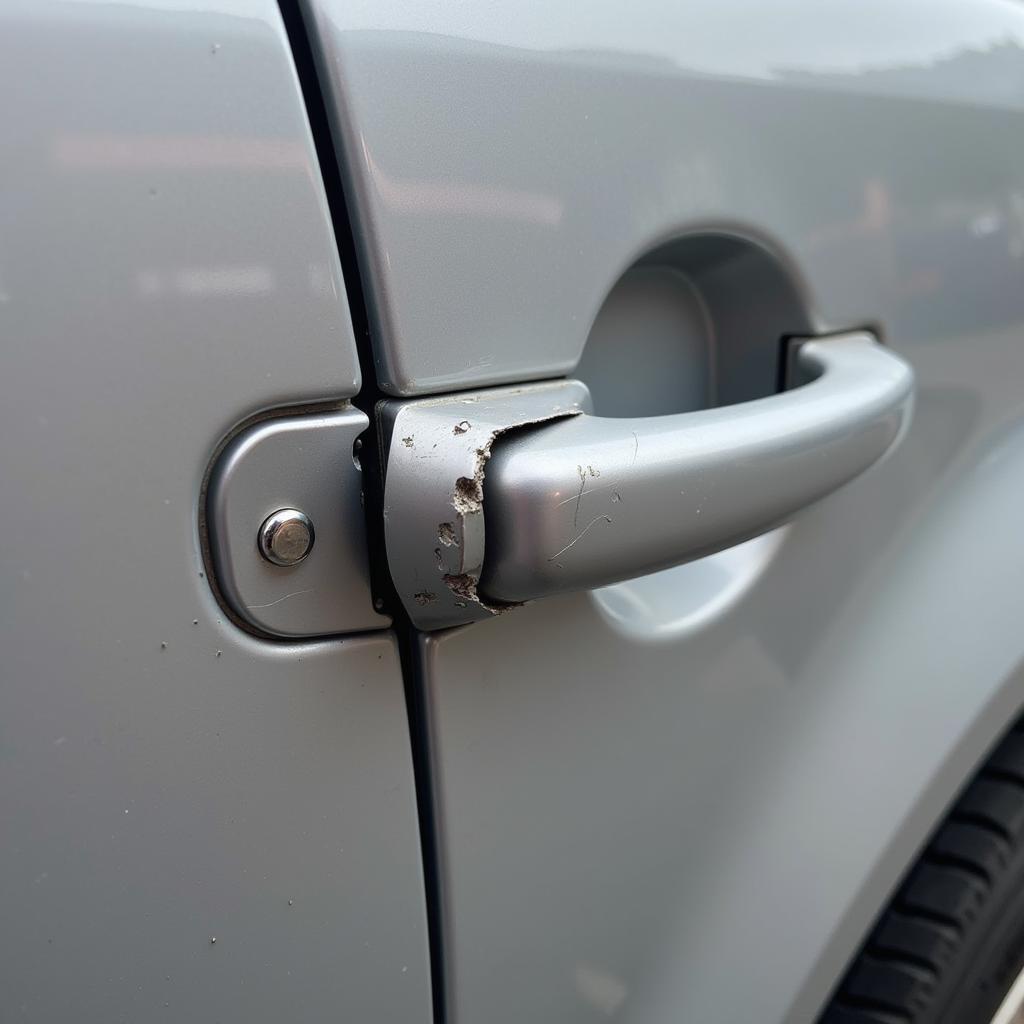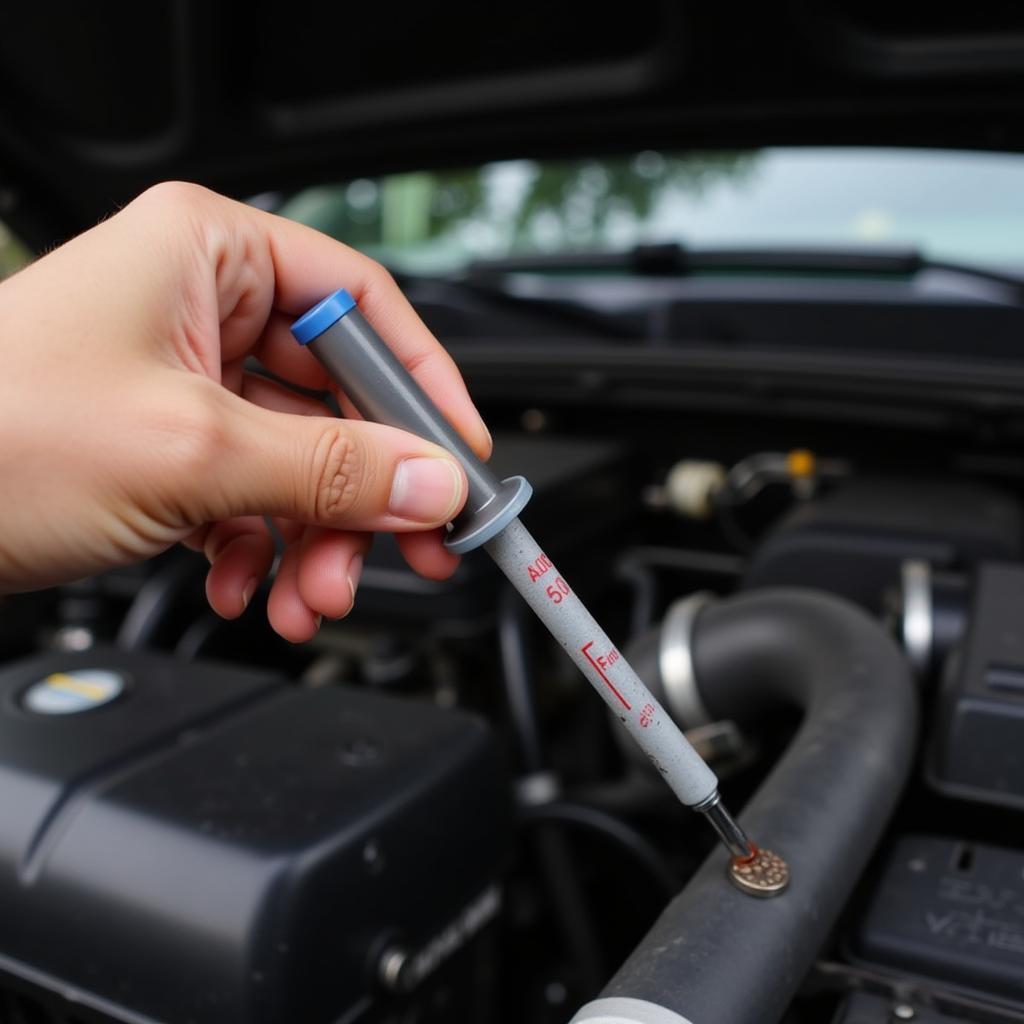Car Door Jam Problems can be a real nuisance, ranging from minor annoyances to significant safety hazards. Whether your car door is stuck, won’t latch, or makes unsettling noises, understanding the root cause is the first step to a lasting solution. This guide provides a detailed overview of common car door jam problems, troubleshooting techniques, and repair strategies.
Similar to lock problems car, a jammed car door can significantly impact your daily routine. Various factors, including worn-out components, debris accumulation, and even temperature fluctuations, can contribute to these issues. Let’s delve into the most prevalent causes and how to address them effectively.
Identifying the Culprit Behind Your Car Door Jam Problems
Pinpointing the exact reason for your car door jam is crucial for effective repair. Several components within the door assembly can malfunction, leading to a jam. These include the door latch, lock mechanism, hinges, and even the door striker. A thorough inspection is key to identifying the source of the problem. Start by visually examining the door jam area for any obvious signs of damage or obstruction.
Common Causes of Car Door Jam Problems
- Faulty Door Latch: The door latch is a complex mechanism that secures the door to the frame. Over time, it can wear out, break, or become misaligned, preventing the door from opening or closing correctly.
- Damaged Door Striker: The door striker, also known as the door catch, is the metal plate on the door frame that the latch engages with. If it’s bent, damaged, or misaligned, it can create a car door jam.
- Worn-out Hinges: Door hinges bear the weight of the door and allow it to swing open and closed. Loose, rusted, or damaged hinges can cause the door to sag or bind, resulting in a jam.
- Obstructions in the Door Jam: Dirt, debris, ice, or even small objects lodged in the door jam can prevent the door from closing or latching properly.
- Bent or Damaged Door: In cases of accidents or collisions, the car door itself might be bent or damaged, interfering with its normal operation and leading to a jam.
 Car Door Latch Mechanism Exploded View
Car Door Latch Mechanism Exploded View
Troubleshooting Car Door Jam Problems: A Step-by-Step Guide
Before rushing to a mechanic, you can try several troubleshooting steps to resolve the car door jam yourself.
- Inspect the Door Jam: Carefully examine the door jam area for any visible obstructions like dirt, debris, or foreign objects. Use a flashlight to get a better view.
- Lubricate the Latch and Hinges: Apply a suitable lubricant to the door latch, hinges, and striker plate. This can often resolve issues caused by friction or rust.
- Check the Door Alignment: See if the door is properly aligned with the frame. If the door is sagging or misaligned, it might need adjustment or hinge replacement.
- Test the Lock Mechanism: Try locking and unlocking the door several times to see if the lock mechanism is functioning correctly.
- Inspect the Door Striker: Check the door striker for any signs of damage or misalignment. A bent striker can often be straightened with a hammer and a block of wood.
 Damaged Car Door Striker Plate Causing Jam
Damaged Car Door Striker Plate Causing Jam
This can be similar to theres a big problem with your car tires in the sense that seemingly small issues can cause major inconveniences. Addressing these problems promptly can prevent further damage and ensure your safety.
When to Seek Professional Help for Car Door Jam Problems
While many car door jam problems can be resolved with DIY troubleshooting, some situations require professional assistance. If you’ve tried the troubleshooting steps and the problem persists, or if the door is significantly damaged, it’s best to consult a qualified automotive technician.
“A jammed car door can indicate a more serious underlying issue,” says automotive expert John Smith, ASE Certified Master Technician. “Ignoring the problem can lead to further damage and compromise your safety.” It’s better to be safe than sorry when it comes to car door jam problems.
 Mechanic Repairing Car Door Jam
Mechanic Repairing Car Door Jam
Preventing Car Door Jam Problems
Regular maintenance can help prevent car door jam problems from occurring in the first place. Keeping the door jam clean, lubricating the hinges and latch periodically, and addressing any minor issues promptly can save you time, money, and frustration in the long run. Much like preventing problems from too much weight in your car, proactive maintenance is key to avoiding future issues.
“Preventive maintenance is the best way to avoid car door jam problems,” advises automotive specialist Jane Doe, Certified Automotive Service Excellence Advisor. “Regular cleaning and lubrication can significantly extend the life of your door components.”
Conclusion: Keeping Your Car Doors in Top Condition
Car door jam problems can be a hassle, but understanding the common causes and applying appropriate troubleshooting techniques can help you resolve the issue effectively. Regular maintenance is crucial for preventing future problems and ensuring the smooth operation of your car doors. For further assistance, feel free to connect with AutoTipPro at +1 (641) 206-8880 or visit our office at 500 N St Mary’s St, San Antonio, TX 78205, United States.
 Lubricating Car Door Hinges for Preventative Maintenance
Lubricating Car Door Hinges for Preventative Maintenance
Just as with car recommends premium long term engine problems if use regular, addressing minor issues early can prevent major headaches down the road. Don’t let a car door jam disrupt your day – take proactive steps to keep your car doors functioning smoothly. Dealing with car door jam problems efficiently ensures your vehicle remains reliable and safe.
Similar to issues described in lexus is250 2014 car door problem, sometimes professional help might be necessary.






Leave a Reply